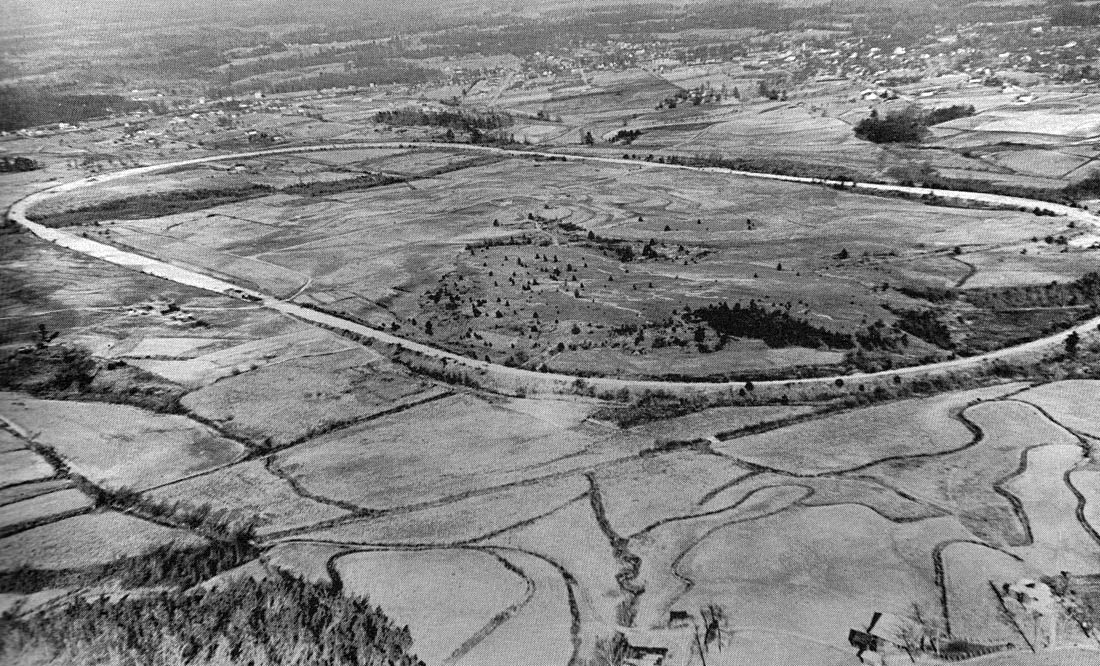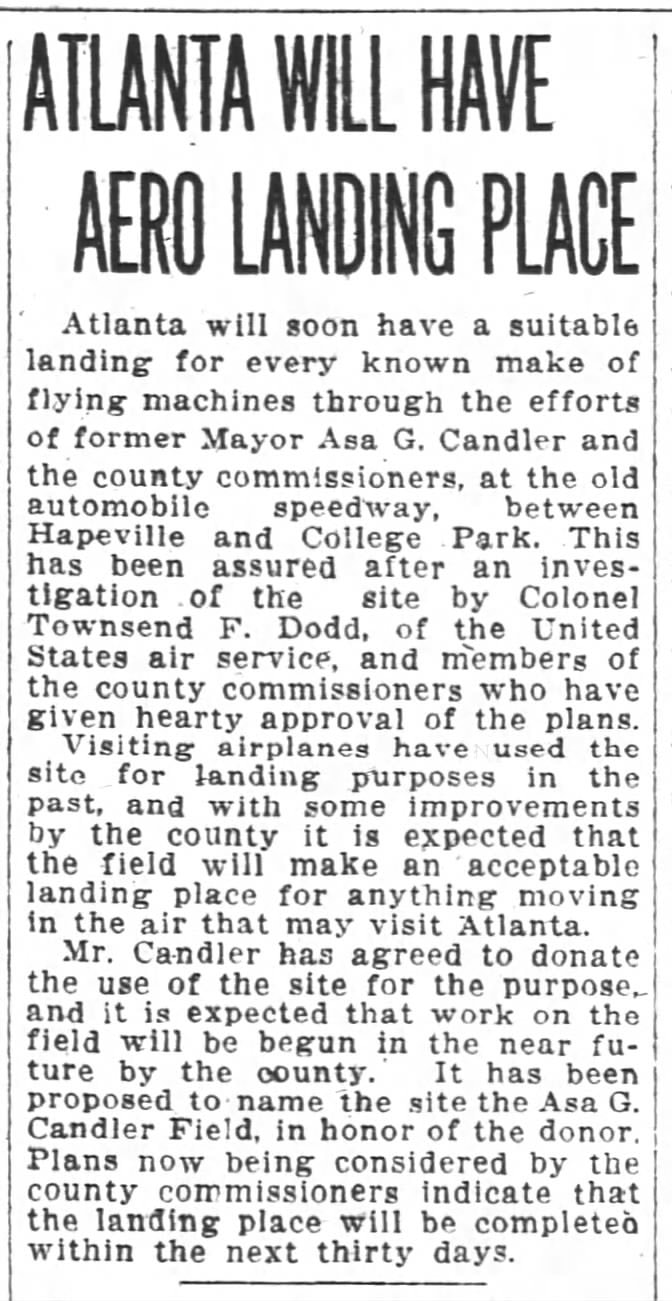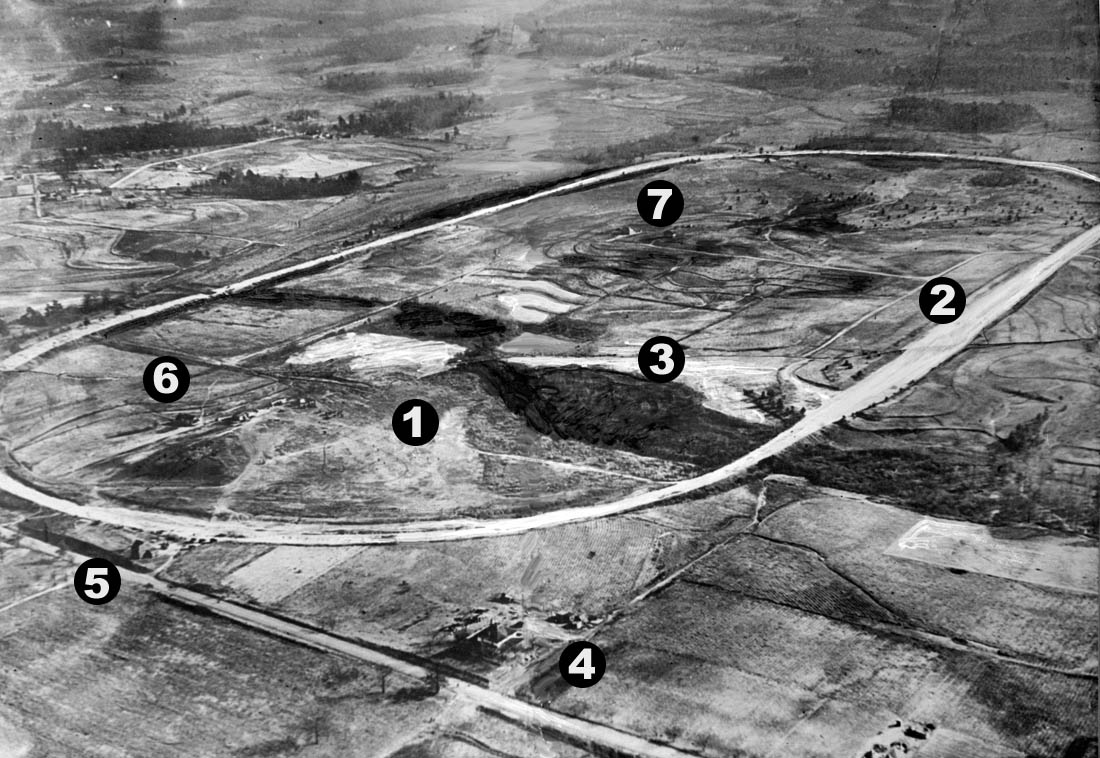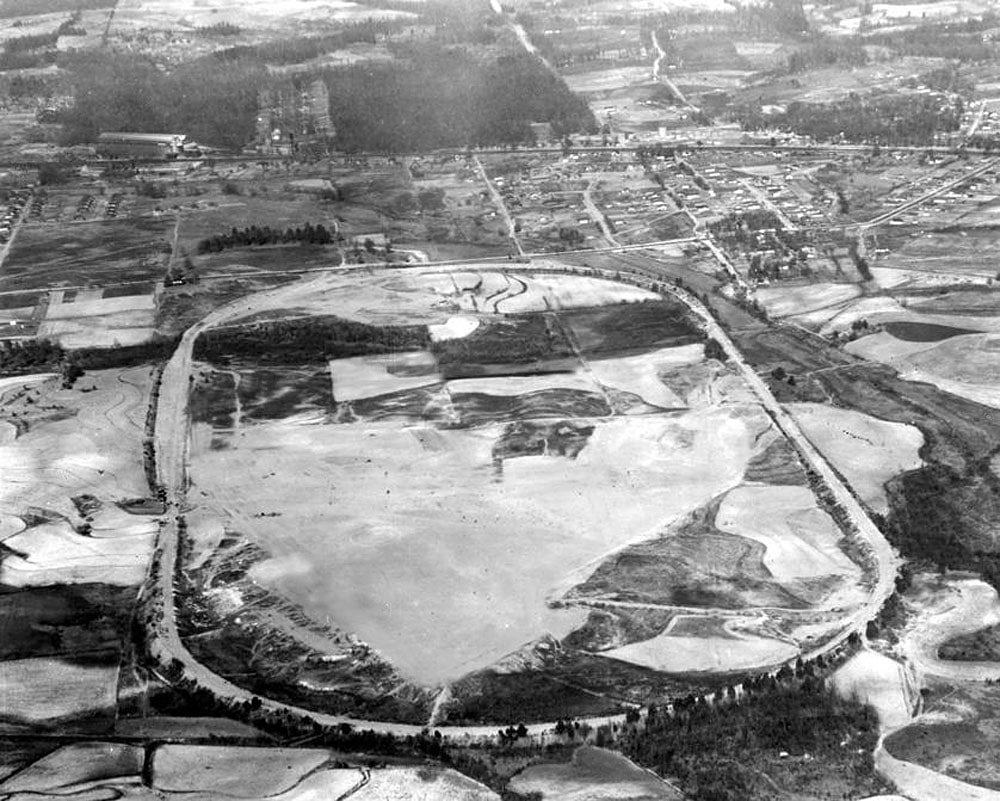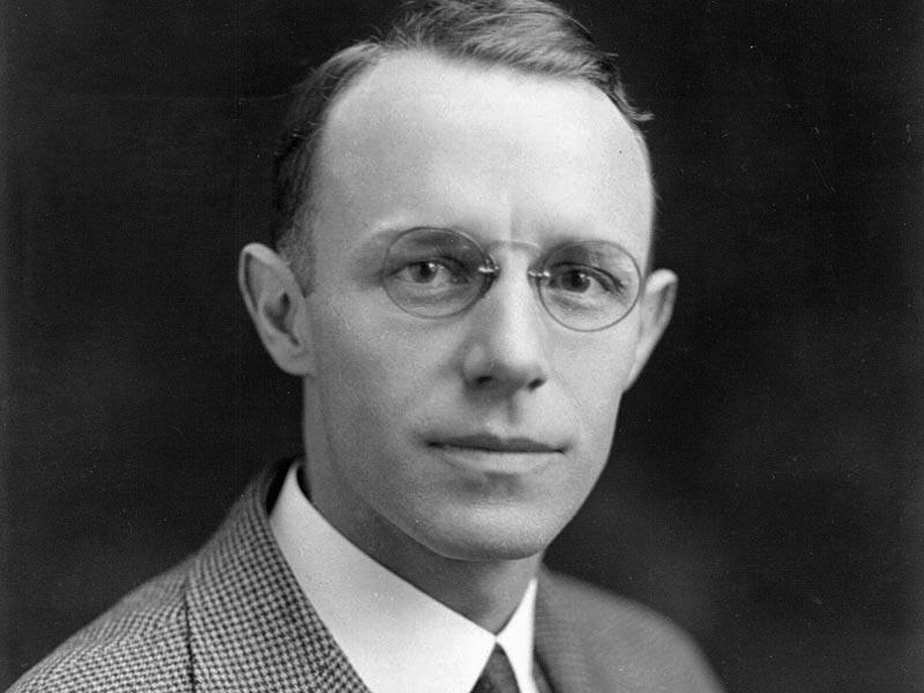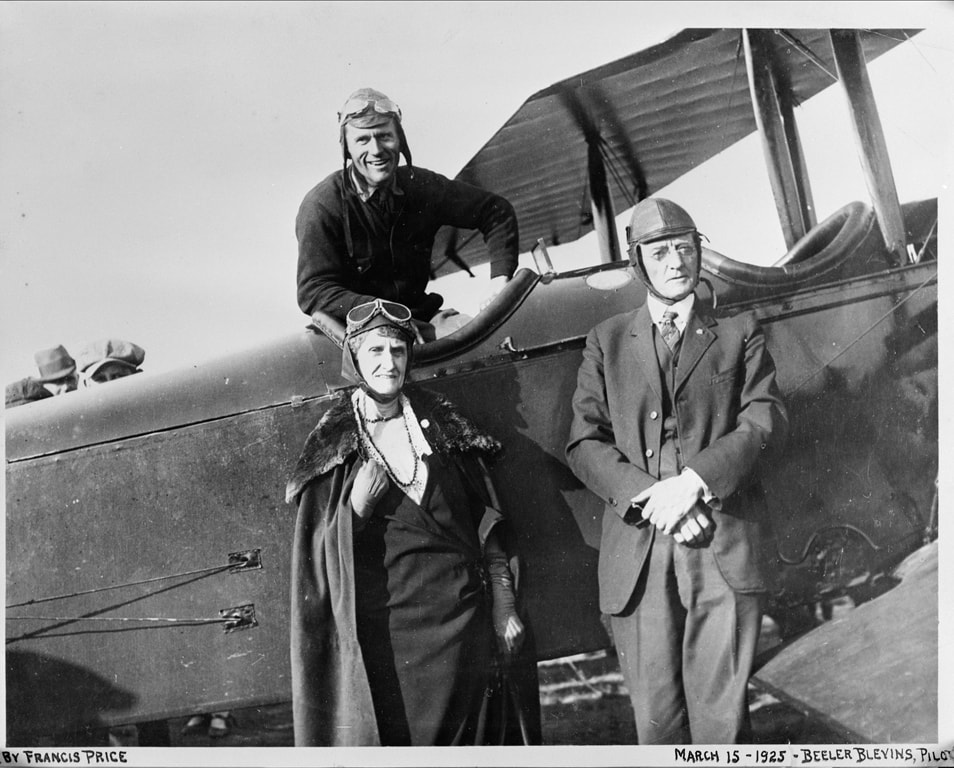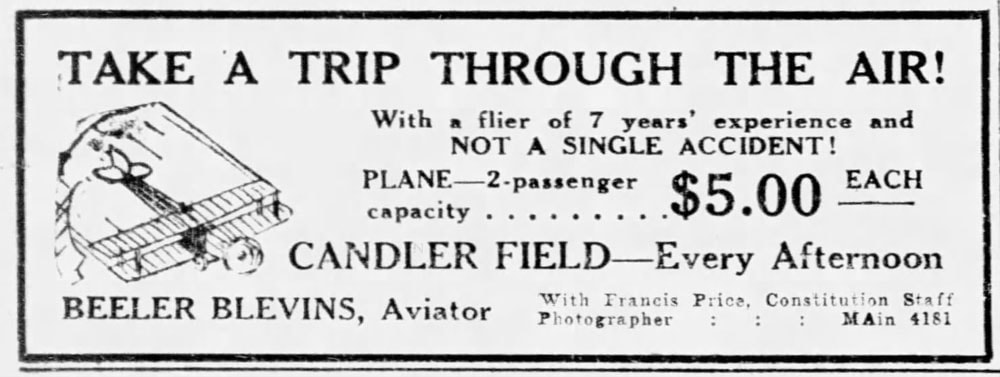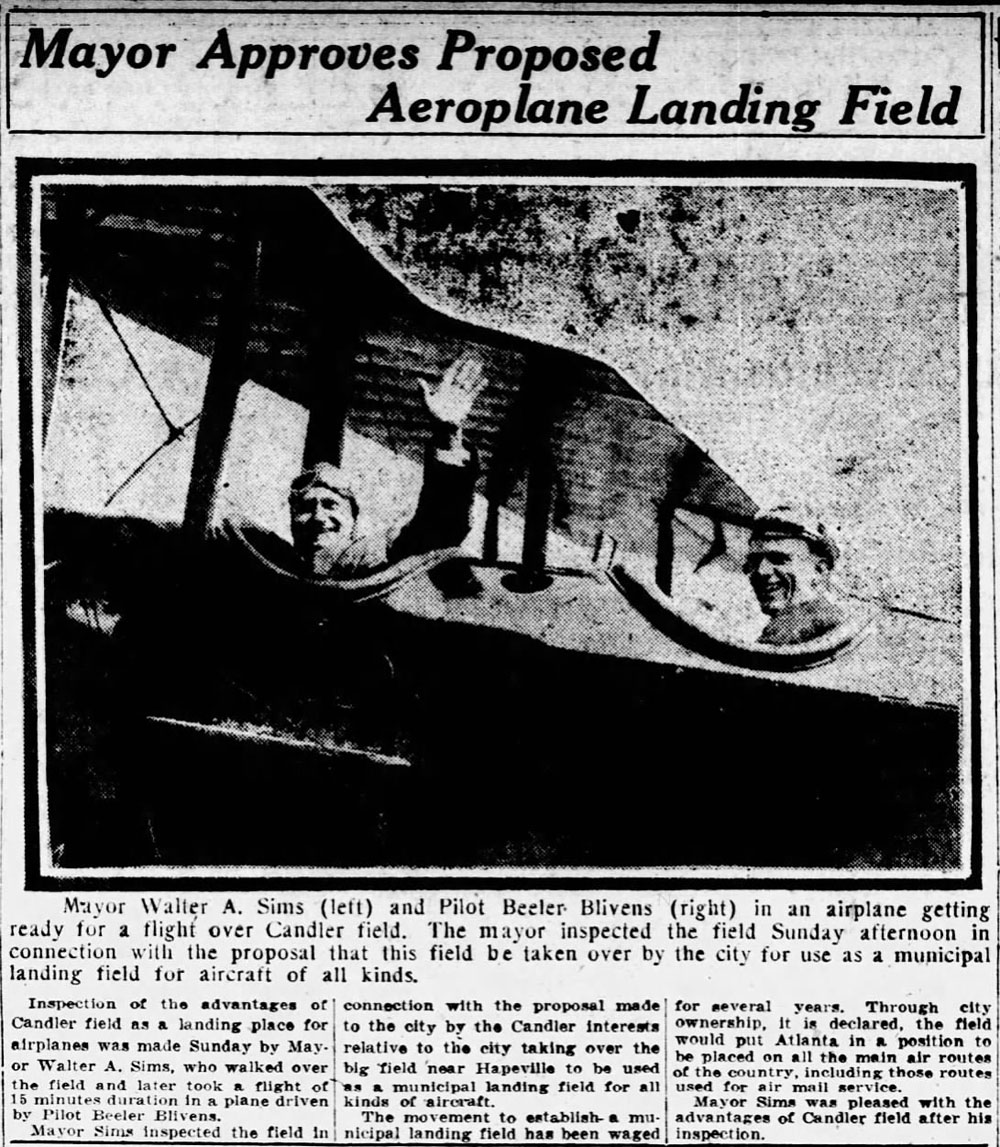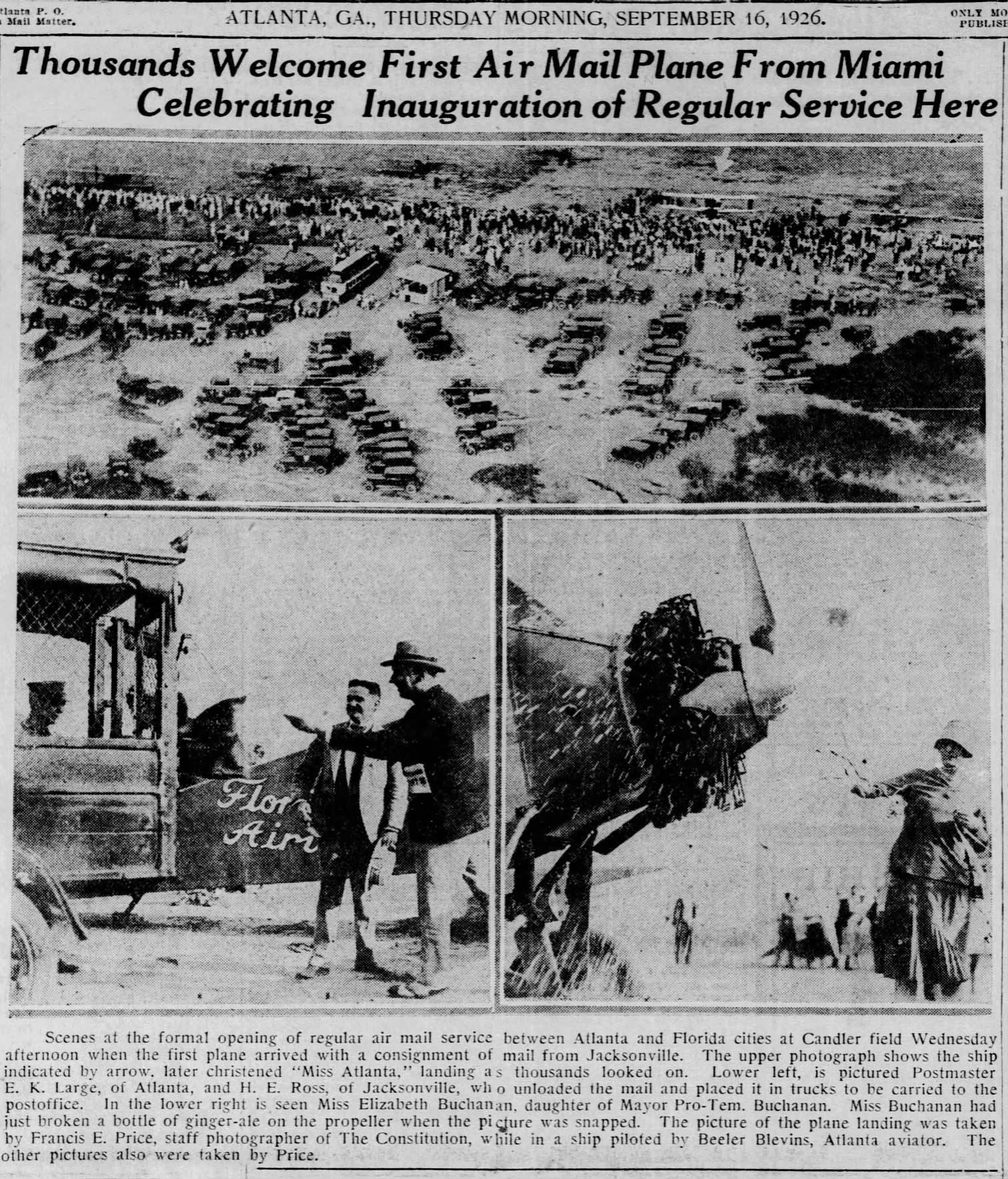FROM RACETRACK TO AIRPORT
The Atlanta Speedway closed after a single season in 1910 and the abandoned track sat idle for the better part of a decade. On March 31, 1919, it was announced that Asa Candler, Sr. agreed to donate the use of the property for the purpose of an "aero landing place". ("Airport" was not yet a common term.) Grading and leveling of the site began almost immediately.
Here's an aerial view of the abandoned track circa 1919. This is facing northeast towards the city of Hapeville. The wide section of the track on the left was the homestretch and site of the spectator stands. The area of the farmhouse at the bottom right corner is near what is now the north end of concourse E.
Below is a circa 1920 view of the track facing southeast. Grading had begun in preparation for the new airfield. Virginia Avenue is in the foreground.
1. New landing field.
2. Old racetrack home stretch. The grandstand and bleachers (demolished years earlier) were located to the right of the track from this perspective.
3. Swampy area surrounding one of the Flint River tributaries
4. Ruins of old racetrack clubhouse.
5. Tenant shack at entrance of flying field.
6. House of Bob Holley, caretaker.
7. Remains of hospital for injured race car drivers. The garages had been located along the road to the right.
1. New landing field.
2. Old racetrack home stretch. The grandstand and bleachers (demolished years earlier) were located to the right of the track from this perspective.
3. Swampy area surrounding one of the Flint River tributaries
4. Ruins of old racetrack clubhouse.
5. Tenant shack at entrance of flying field.
6. House of Bob Holley, caretaker.
7. Remains of hospital for injured race car drivers. The garages had been located along the road to the right.
Here's the same 1920 photo lined up as closely as possible with a current Google Earth view from the same perspective. You can scroll back and forth to compare. Once again, Virginia Avenue is in the foreground and this is facing southeast. At the center of the current view is Delta's corporate campus and the Delta Flight Museum.
This early 1920s view shows extensive grading in the lower half of the oval in preparation for the airport runways. This is facing north with the city of Hapeville at the top right. Image courtesy of the Atlanta Journal-Constitution.
William B. Hartsfield played a pivotal role in the development and progress of the airport and worked tirelessly to promote Atlanta as a world class aviation hub. As Alderman and City Council member in the 1920s, he was chairman of the Atlanta's first Aviation Committee of the City Council and led the transformation of the abandoned racetrack into a major airport. Hartsfield wrote in 1927, "No greater investment can be made at this time in the future of Atlanta than in the full development of Candler Field as the South's leading airport. Atlanta should do now in the matter of aviation what it did many years ago in the matter of the railroads. We can not afford to lose a day in providing a landing field of size, proportion and environment that may be developed as to assume Atlanta's supremacy in the Southeast!"
Another important figure in the early development of the airport was local aviator and barnstormer Beeler Blevins, in plane, seen posing with an unidentified couple on March 15, 1925. After the closing of the Atlanta Speedway, Mr. Blevins obtained a permit from the Candler estate to operate his aircraft there. When Hartsfield and his delegation visited the abandoned track while searching for a suitable airport site, they were surprised to find that Blevins and other pilots had already been flying from the field for several years. Beeler Blevins' expertise and experience at Candler Field helped influence Atlanta's decision to chose the site for the airport.
An advertisement for biplane rides with Beeler Blevins from the April 19, 1925 Atlanta Constitution. Blevins was frequently hired by local photographers for aerial photography. Virtually every aerial photo of Atlanta airport from the 1920s was taken from his aircraft.
Atlanta Mayor Walter Sims approved the site of abandoned racetrack for development as an airport on Monday March 9, 1925.
The first scheduled airline service from Atlanta occurred on the morning of September 15, 1926 when a Florida Airways plane departed at 6AM for Macon, Jacksonville, Tampa, Ft. Myers and Miami. Almost simultaneously, a second aircraft departed Miami and followed the same route northbound. While the morning flight left Atlanta with little fanfare, a crowd of over 15,000 turned up to witness the historic arrival of the northbound flight at 3:31PM. Unfortunately, the airports along the route were not yet equipped for night operations, and frequent weather delays gave the airline virtually no advantage over the railroads in overnight mail delivery. Florida Airways suspended the route on December 31, 1926, leaving Atlanta and its new airport without airline service. In August 1927, New Orleans-based St. Tammany - Gulf Coast Airways was awarded the air mail contract for service between Atlanta and New Orleans. Pitcairn Aviation inaugurated mail service between Atlanta and New York on May 1, 1928. Pitcairn would eventually become Eastern Air Lines which, along with Delta, dominated Atlanta Airport for more than 6 decades.
Remarkably, silent movie footage of this historic event has been located and digitized by the University of South Carolina. This is the earliest video of the Atlanta airport that I'm aware of. These scenes are outtakes from a Fox Corporation newsreel and remained unreleased for nearly a century. Florida Airways' "Miss Atlanta" is seen arriving on the inaugural northbound flight. Atlanta Postmaster E. K. Lodge and Jacksonville Postmaster H. E. Ross are seen unloading mail. Elizabeth Buchanan and her father, Mayor Pro-Tem Buchanan, fumble through several attempts to christen the aircraft and then pose for the media. At the end of the ceremony, three planes are shown flying in formation overhead. Again, this was September 15, 1926.

